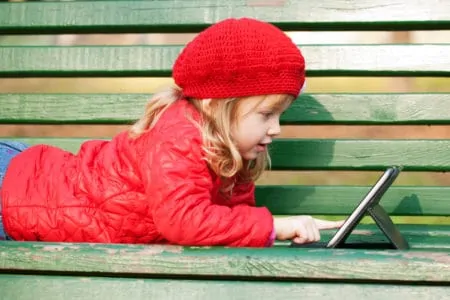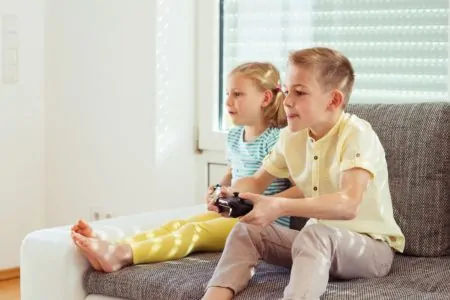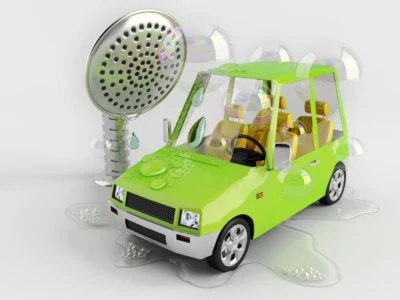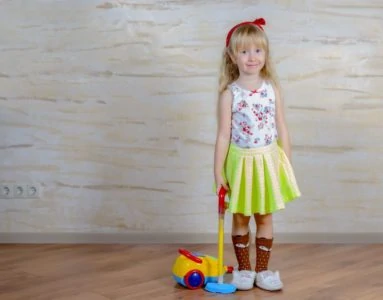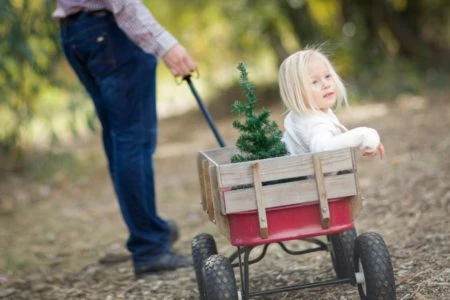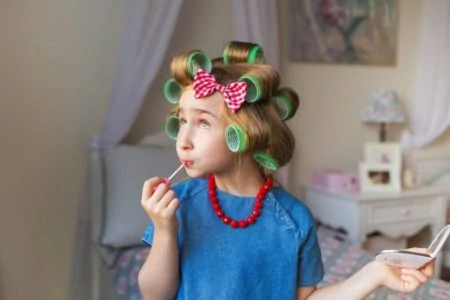Let’s be honest: baby toys get gross. Between the drool, the floor time, and the sticky hands, your little one’s favorite playthings are basically germ magnets. You know they need a good scrub, but figuring out the best method for each material can feel overwhelming.
I remember staring at a pile of dirty blocks and a questionable stuffed bunny, wondering if I could just toss them all in the washer. Spoiler alert: you can’t. But cleaning them doesn’t have to be a headache.
Here is everything you need to know about cleaning, sanitizing, and disinfecting your baby’s toys safely and effectively.
Key Takeaways
- Establish a Routine: Aim to clean everyday toys weekly and sanitize them monthly or immediately after playdates and illness.
- Check the Material: Machine wash plushies if labels permit, use the dishwasher for hard plastics, and surface-clean electronics.
- Fight Mold: Bath toys require rigorous drying and frequent bleaching to prevent dangerous mold growth inside.
- Safety First: Avoid harsh chemicals on porous items; stick to vinegar solutions or mild soap for wooden and rubber toys.
Why Cleaning Baby Toys Matters
Babies learn through touch and taste, which means almost everything ends up in their mouths. While exposure to some germs helps build immunity, toys can quickly become breeding grounds for harmful bacteria, viruses, and mold.
Regular cleaning is vital, especially during flu season or after a playdate. This isn’t just about dirt you can see; it is about the invisible microbes that linger on plush fabrics and plastic surfaces (1). A consistent cleaning schedule keeps the fun going without the worry.
Cleaning vs. Sanitizing vs. Disinfecting
Before grabbing the soap, it is helpful to know the difference between these three terms:
- Cleaning: This removes visible dirt, dust, and grime using soap and water. It physically lowers the number of germs but doesn’t necessarily kill them.
- Sanitizing: This reduces germs to a safe level as defined by public health standards. This is usually done after cleaning.
- Disinfecting: This uses chemicals to kill germs on surfaces. You typically want to disinfect toys when a child has been sick or if the toy has come into contact with bodily fluids.
How to Clean Baby Toys by Material
Different materials react differently to water and heat. Here is the safest way to tackle each type of toy.
1. Plushies and Soft Toys
Stuffed animals are comfort objects, meaning they get hugged, dragged, and chewed on constantly. First, check the care label.
Machine Washable:
If the label gives the green light, place the toy in a pillowcase or mesh laundry bag to protect plastic eyes and buttons. Use a gentle, baby-safe detergent and run a delicate cycle with warm water. Air dry them in the sun or use a low-heat dryer setting to ensure the stuffing dries completely.
Non-Washable:
For delicate toys or those with battery packs, surface cleaning is your best bet. Dip a cloth in warm soapy water and gently wipe the surface. To kill dust mites on non-washable soft toys, place them in a sealed bag and pop them in the freezer overnight.
2. Plastic Toys
Hard plastic toys like rattles and building blocks are the easiest to manage.
The Dishwasher Method:
Check if the toy is “top-rack dishwasher safe.” If so, this is a game-changer. Place smaller items in a dishwasher basket or mesh bag so they don’t fall onto the heating element. The hot water and steam do an excellent job of sanitizing.
Hand Washing:
If you don’t have a dishwasher, submerge the toys in a sink filled with hot water and dish soap. Scrub them with a bottle brush or sponge, rinse well, and let them air dry.
3. Bath Toys
Bathtime should be clean fun, but those squeaky rubber ducks are notorious for harboring black mold inside. The warm, humid environment is a bacterial paradise (2).
Squeeze out every drop of water after every bath. Store them in a net bag or hanging basket to ensure airflow.
To deep clean, soak bath toys weekly in a solution of 1/2 cup of bleach per gallon of water for 10 minutes. Squeeze the solution inside the toy, shake it, and squeeze it out. Rinse thoroughly with tap water until no bleach smell remains.
Pro Tip: Many parents use a hot glue gun to seal the hole in the bottom of new bath toys. This prevents water from entering, stopping mold before it starts.
4. Electronic and Battery-Operated Toys
Toys with lights, sounds, and batteries can never be submerged. Water will ruin the circuits and rust the battery contacts.
Start by removing the batteries. Dip a cloth in soapy water or a 50/50 vinegar-water solution and wring it out until it is just damp, not dripping. Wipe down the exterior.
Use an old dry toothbrush or a toothpick to clean grime out of speaker holes, buttons, and crevices. Wipe again with a clean damp cloth to remove soap residue.
5. Silicone and Rubber Toys
Silicone is naturally antimicrobial, but it still needs cleaning. Since these are often teethers, you want to avoid harsh chemicals.
Most solid silicone toys can be boiled to sanitize them. Drop them in a pot of boiling water for 5 minutes. Alternatively, many silicone items are top-rack dishwasher safe.
For natural rubber (like Sophie the Giraffe), avoid boiling as it can degrade the material. Instead, wipe down with hot soapy water or a vinegar solution.
6. Wooden Toys
Wood is porous and acts like a sponge. Never soak wooden blocks or train sets, as they will swell, warp, and crack.
Dampen a cloth with a mix of mild soap and water or white vinegar. Wipe the wood gently. If the wood looks dry after cleaning, you can rub a small amount of food-grade oil (like olive oil) onto it to condition the surface.
7. Dolls
Dolls are a mix of materials, making them tricky.
Plastic Bodies: Wipe clean with a damp cloth and mild soap.
Hair: Wash gently with a drop of baby shampoo. If the hair is tangled, soak it in a bowl of water mixed with a little fabric softener, then comb through gently.
Clothes: Toss these in the laundry with your baby’s clothes.
When using a disinfectant or cleaning product for toys and other household surfaces, it is crucial to ensure it will not harm your baby. The AAP offers some safety suggestions, including comments about the use of bleach. It appears that hydrogen peroxide is the least toxic cleaner, resulting in the least amount of adverse reactions.
Editor's Note:
Dr. Leah Alexander, MD, FAAPWhen to Clean and Disinfect
You don’t need to boil every rattle every single day. Here is a realistic schedule to keep things sanitary without losing your mind:
- Visibly Dirty: Clean immediately. Sticky jelly fingers or dropped in the mud? Wash it.
- Weekly: Run hard plastic toys through the dishwasher or do a quick wipe-down of favorites.
- After Illness: If your child (or a playdate friend) has been sick, disinfect everything they touched.
- Second-Hand Toys: Always deep clean and disinfect used toys before giving them to your baby.
For disinfecting, you can use a diluted bleach solution (1 tablespoon bleach per gallon of water) or a store-bought disinfectant spray approved for children’s items. Always rinse with plain water afterward to remove chemical residue (3).







